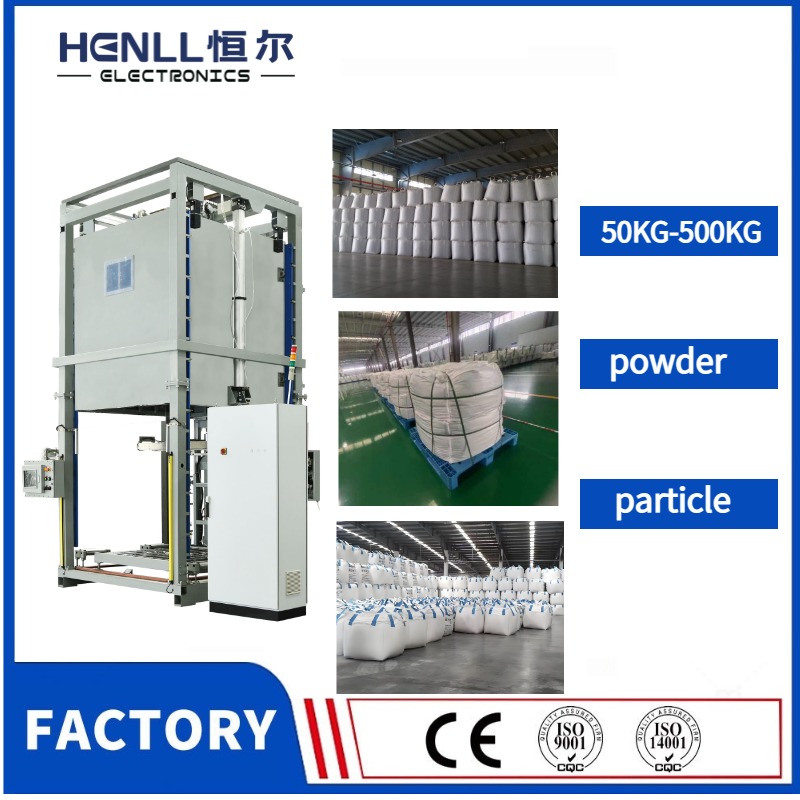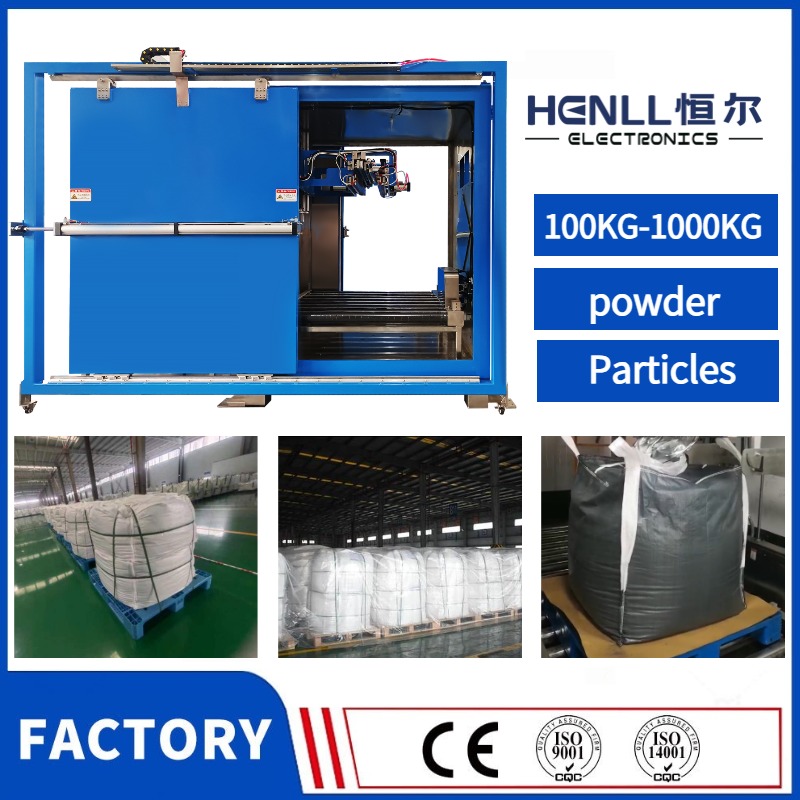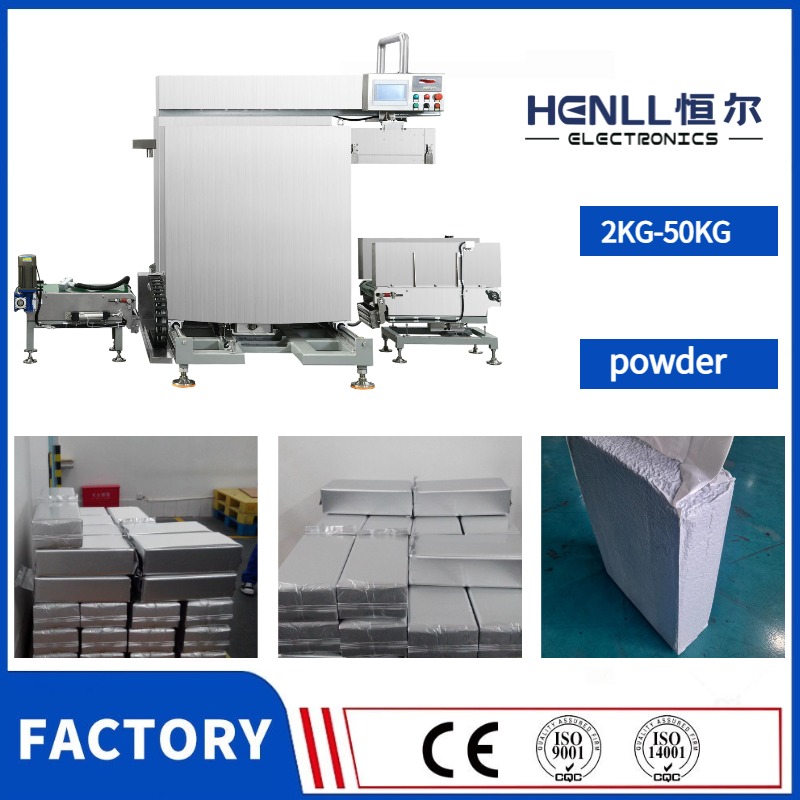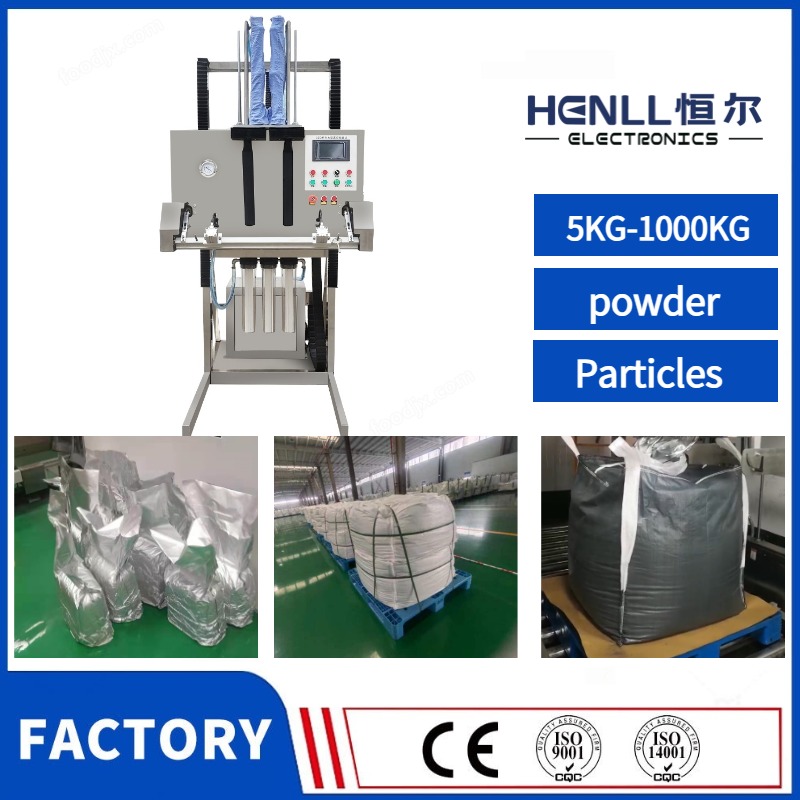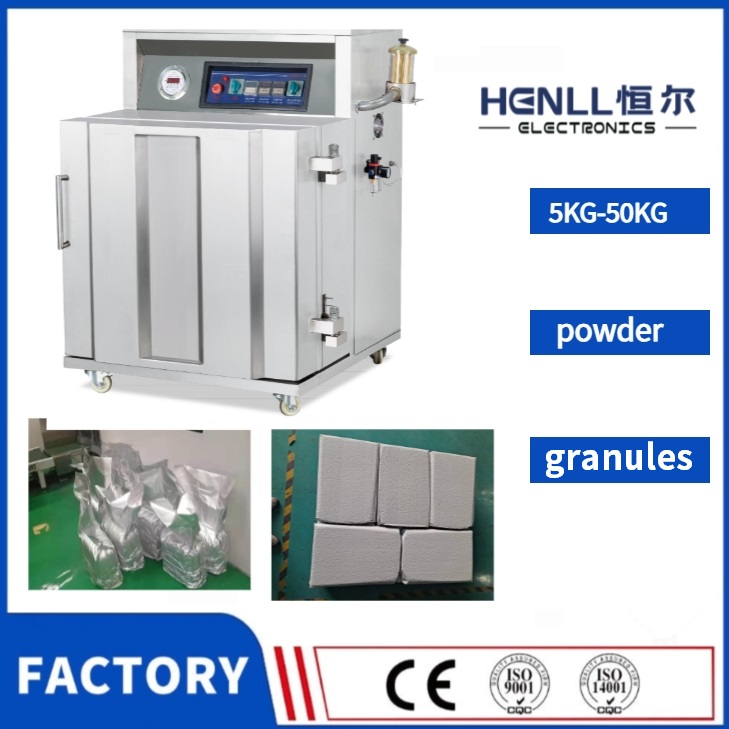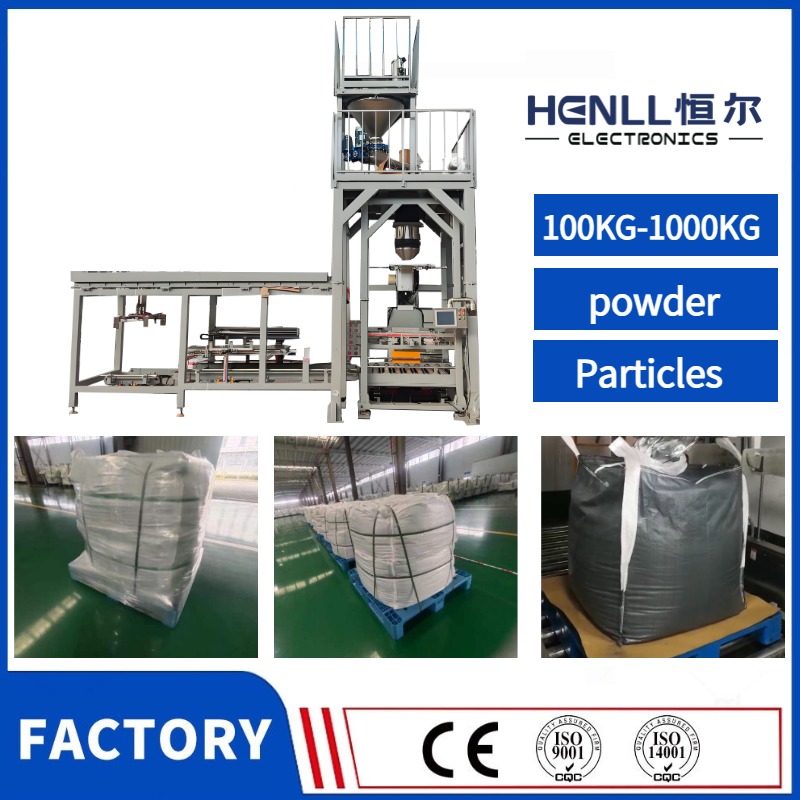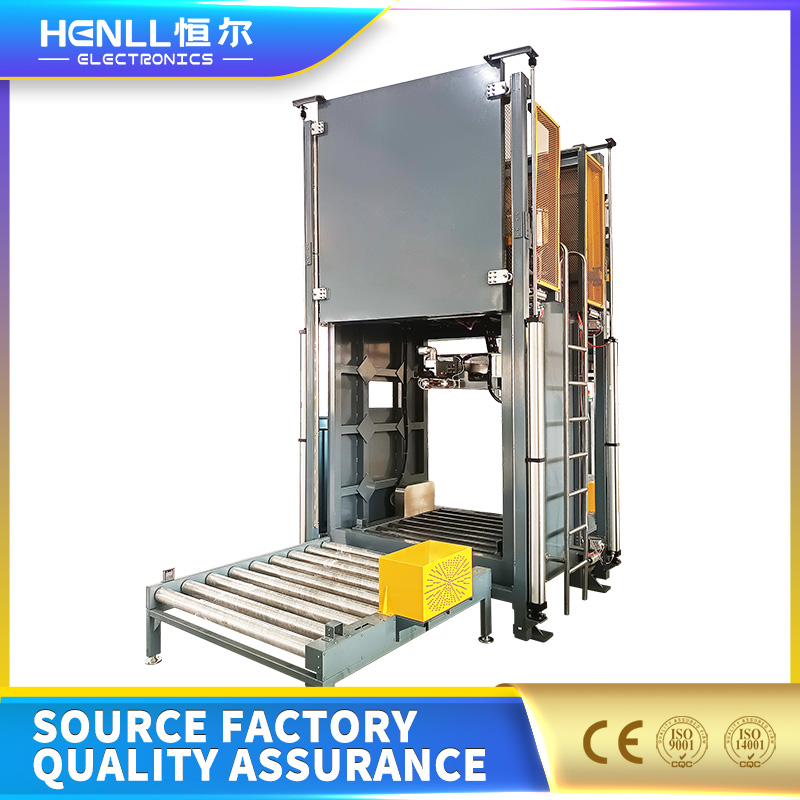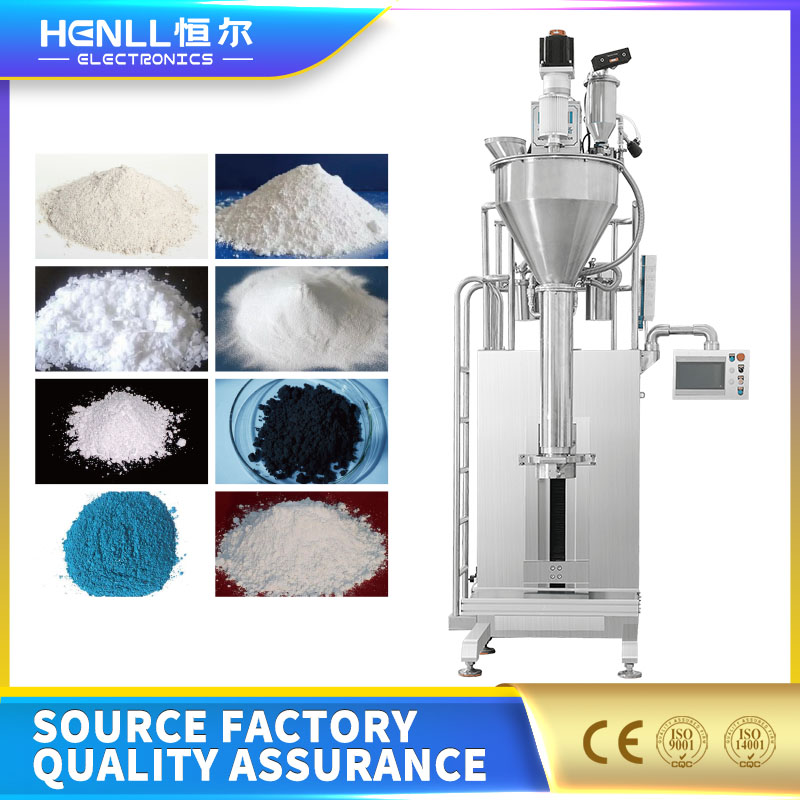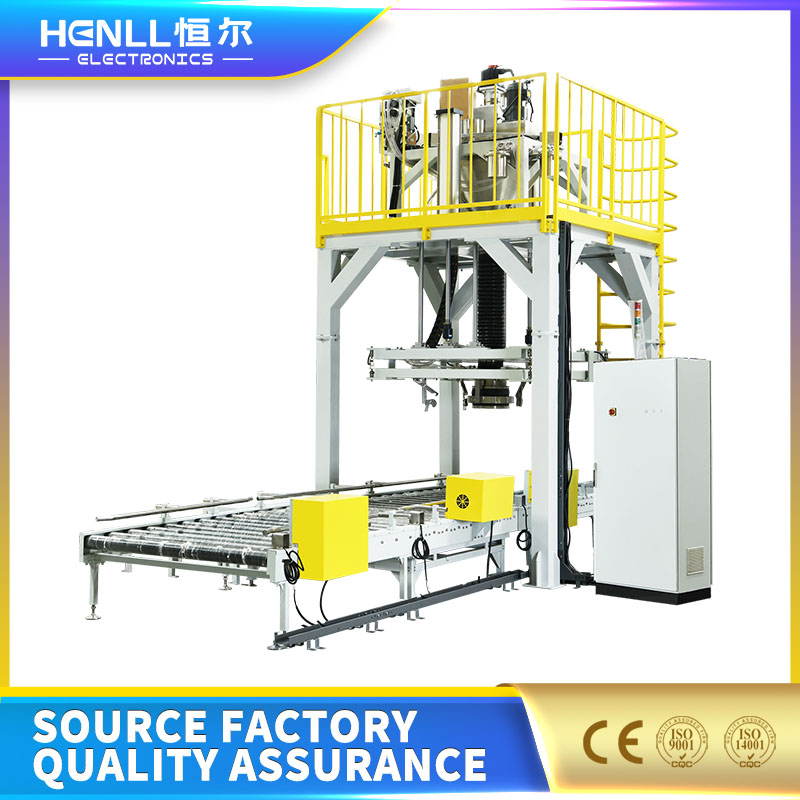Milk powder packaging in 2025 keeps the product safe and good. It also meets what people want around the world. The industry will be worth USD 2.3 billion. Automatic filling machines are the top new technology. New designs use stainless steel and sensors. These machines save energy and work faster. They also lower the chance of germs. This helps companies follow strict hygiene rules.
Metric | Value |
|---|---|
Estimated Market Size (2025) | USD 2.3 billion |
Leading Machine Type Segment | Filling Machines (26.0% share) |
Leading Automation Segment | Automatic (54.0% revenue share) |
Key Takeaways
In 2025, milk powder packaging uses smart machines and tough materials. These help keep milk powder fresh, safe, and simple to use.
Automation and robotics make things faster and more accurate. They also help keep everything clean. This lets companies waste less and work quicker.
Picking the best packaging machine depends on the powder type. It also depends on how much is made and what packaging is needed. This helps keep quality high and work efficient.
More companies use sustainable materials like recyclable plastics and paper. These help protect the planet and give customers what they want.
Setting up, cleaning, and taking care of machines is important. This keeps machines working well. It also makes sure milk powder stays safe and good quality.
Milk Powder Packaging Overview
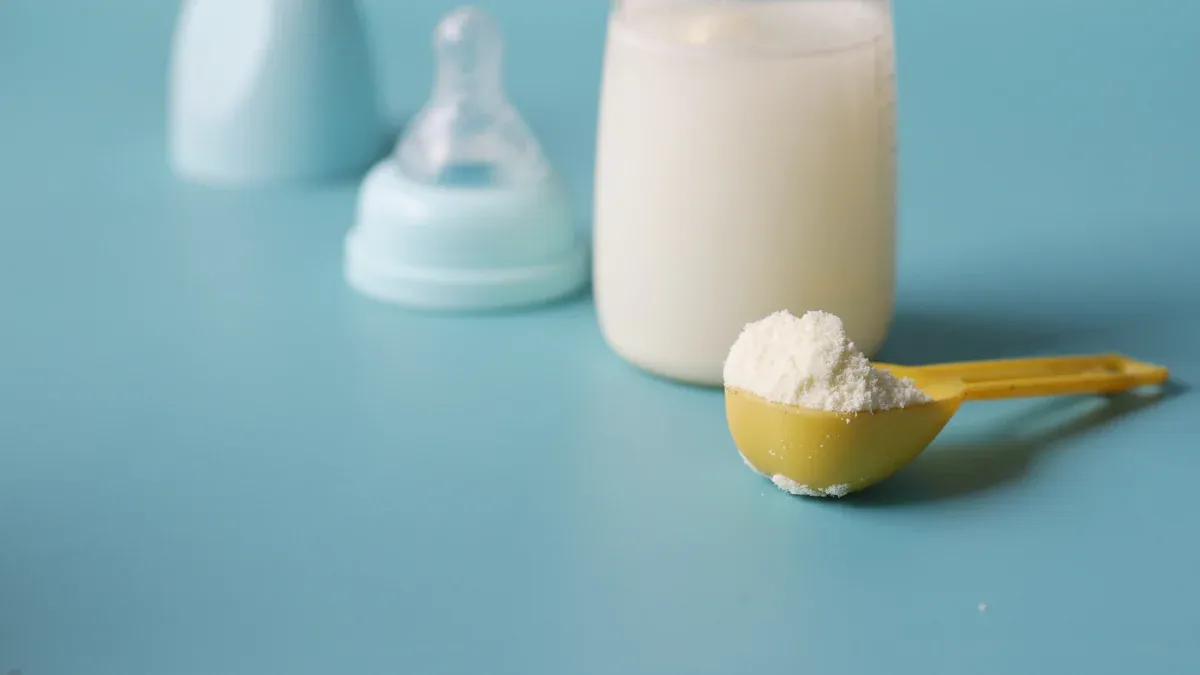
Purpose and Benefits
Milk powder packaging is very important in food. It keeps milk powder safe from things like water, air, light, and bugs. This stops the powder from getting lumpy or going bad. It also keeps the nutrients inside. Companies use high-precision filling machines for the right amount in each package. This helps save money and follow the rules.
Packaging makes milk powder last longer. This means less food gets thrown away. Milk powder does not spoil as fast as fresh milk. It does not need as much cold storage. This helps cut down on pollution from moving and storing it. The small and light packages are easy to ship and save space.
Modern machines use nitrogen flushing and vacuum sealing. These take out air and keep the powder fresh. Automated systems help stop dust and keep the powder safe. They also make the work go faster. Labeling and coding machines put important info on each package. This helps with safety and tracking. Quality control tools like metal detectors and checkweighers check every package for safety.
Tip: Companies that use new packaging machines can work faster and waste less.
2025 Industry Standards
In 2025, milk powder packaging must be better than before. The focus is on keeping milk safe, making it easy to use, and helping the planet. Companies use plastic, paper, and metal for packaging. Each one has its own good points for safety and the environment. Plastic is still used a lot because it keeps things out. But more companies now use plastics that can be recycled, films that break down, and paper.
Infant milk powder packaging has even stricter rules. It often has seals you can see if opened, lids you can close again, and clear labels. Some packages have measuring cups to help people use them. These things keep the product safe and follow the rules.
Key trends in 2025 are:
Using strong laminates and films to block water and germs.
More flexible pouches that can be closed again, good for online shopping.
New refillable bottles and ways to remove oxygen.
More packaging that helps people and the environment.
Here is a table with packaging materials and their main benefits:
Material | Main Benefit |
|---|---|
Plastic | Strong barrier, durable |
Paper | Recyclable, lightweight |
Metal | Superior protection |
Milk Powder Packing Machine Types
Milk powder packing machines in 2025 give companies many options. Each type fits different needs for making, keeping clean, and packaging. Picking the right machine keeps milk powder safe and fresh. It also makes it easy to use.
Vertical Packaging Machines
Vertical packaging machines are popular for milk powder. They use Vertical Form Fill Seal technology. These machines make bags from films and fill them with powder. Companies like vertical machines because they are fast and flexible. Most machines fill 500 to 2,000 pouches each hour. Some advanced models, like the MF 52, fill up to 4,800 bags per hour. Bag sizes go from small sachets of 10 grams to big bags of 5 kilograms.
Vertical machines can make many bag styles:
Pillow bags
Gusseted bags
Flat bottom stand-up bags
Quad seal bags
Brick shape bags
Bags with hanging holes or easy tear notches
These machines use auger fillers or cup fillers for exact amounts. Heat sealing and impulse sealing keep powder fresh. PLC controls and HMI screens make using the machine easy. Safety features like emergency stops and interlocks protect workers. Companies can change bag sizes and styles quickly. This helps with different needs.
Note: Vertical machines often add date and batch codes. This helps track products and follow food safety rules.
Bagging Systems
Bagging systems pack milk powder for bulk and retail. These machines use strong materials like plastic, paper, or aluminum. Bagging systems work with gusseted bags, stand-up pouches, and sealed pouches. They offer resealable choices like zip-locks and sliders for easy use.
Keeping things clean is very important in bagging systems. Most machines use stainless steel so cleaning is easy. Enclosed filling chambers stop dust and keep powder safe. Dust-free bag clamping keeps powder safe while filling. Some machines use bottom-up filling to lower dust and spills. Operators can clean and fix these machines quickly. This keeps downtime low.
Bagging systems also have:
Continuous heat sealing, impulse sealing, and glue for strong seals
Deaeration probes to take out air and make powder firm
Height-adjustable conveyors for easy use
Certification for food safety standards
Bagging systems work for coffee, tea, and mixes. But they are best for milk powder packing. Companies use these machines for fast rotary fillers and semi-automatic setups.
Stick Pack Machines
Stick pack machines changed how milk powder is packed for single servings. These machines make slim, easy-to-carry sachets. People like stick packs because they are simple to use. Stick pack machines fill each sachet with the right amount. This helps with portion control.
Stick pack machines use volumetric, auger, or vibratory filling. This gives exact amounts and less waste. Multi-lane machines make packing faster and save work. Stick packs keep powder safe from germs and make it last longer. Companies can pick package sizes for different markets.
Benefits of stick pack machines:
Clean and safe for single servings
Easy to carry for travel and busy days
Fast rotary fillers for big production
Steady and exact filling for good quality
Tip: Stick pack machines help companies give customers easy and controlled portions.
Can Filling Machines
Can filling machines give the best protection for milk powder. These machines use strong containers with tight caps. Nitrogen filling lowers oxygen in cans to under 2%. This keeps powder fresh and stops oxidation. Automated lines do vacuuming, nitrogen filling, sealing, and capping without mixing things up.
Can filling machines have many good points:
Longer shelf life by lowering oxygen
Stops oxidation and keeps quality
Keeps nutrients in the powder
Protects from water and germs
Cuts down on food waste
Helps companies compete better
These machines use vacuum sealing, heat sealing, and induction sealing for tight protection. Tamper-evident features make buyers feel safe. Companies use can filling machines for baby formula and top milk powder. Fast rotary fillers in canning lines make more products and keep things clean.
Machine Type | Capacity Range | Packaging Formats | Hygiene Features |
|---|---|---|---|
Vertical Packaging | 500–4,800 bags/hour | Pillow, gusseted, quad seal, etc. | PLC controls, enclosed chambers, safety |
Bagging Systems | Bulk & retail volumes | Gusseted, stand-up, resealable | Stainless steel, dust-free clamping |
Stick Pack Machines | High-speed, multi-lane | Single-serve stick packs | Precise dosing, contamination control |
Can Filling Machines | Automated, high-speed | Rigid cans, bottles | Nitrogen filling, vacuum sealing |
Companies should pick the machine type that fits their size, cleanliness, and packaging needs. The right machine helps work better and keeps milk powder safe.
Powder Packaging Machine Technology
Automation and PLCs
Automation has made powder packaging machines much better. Programmable Logic Controllers, or PLCs, now run most steps. These controllers use sensors and air-powered parts to work fast and smart. Workers can pick automatic or semi-automatic modes. This helps companies spend less on workers. PLCs make sure sealing and dosing are always the same. Each package gets the right amount of milk powder. This is usually within one gram. That means less waste and more work done.
Modern machines use servo motors for better control. These motors help the machine run smoothly. They also break down less often. Workers can change speed, save settings, and see alerts on touchscreens. Machines from top brands like Siemens or Schneider last longer. They also need less fixing. Fewer manual steps keep workers safe.
Tip: Using automation and PLCs helps companies make products faster and better.
Main benefits of automation and PLCs:
High efficiency with fewer workers
Sealing and dosing stay the same every time
Easy to switch can sizes
Fewer problems and less fixing needed
Quick speed changes and alerts for problems
Robotics Integration
Robotics are important in today’s powder packaging machine lines. Robots do jobs like filling trays and weighing. This makes things faster and cuts mistakes. Less touching by people keeps things cleaner. It also lowers the risk of germs. Robots help machines work together better. This makes the whole line run smoothly.
Many machines now use inline heat sealing and stitching. These steps keep the product safe and speed up work. Buffer zones, like a one-hour buffer, let the line keep going without stopping. Robots make it easy to change can sizes and packaging styles.
Feature | Details |
|---|---|
Production Capacity | |
Filling Accuracy | ±1-2 grams |
Control System | PLC with touchscreen HMI for real-time monitoring and fault detection |
Automation Scope | Fully automated from can feeding to palletizing |
Filling Technology | High-precision spiral metering system |
Quality Control | Integrated weight checkers, leak detectors, and metal detectors |
Hygienic Design | Food-grade stainless steel and vacuum sealing |
Flexibility | Supports multiple can sizes and easy format changeover |
Note: Adding robotics to powder packaging machines makes them faster and improves quality.
Spiral Feeding and Accuracy
Spiral feeding helps powder packaging machines handle milk powder gently. This system uses a screw and shaking to move powder. Vibrations at the bottom stop powder from sticking. The spiral blade pushes powder forward, even if it does not flow well.
Special weighing sensors and controls work with spiral feeding. They make sure each package has the right weight. Automation means fewer mistakes and faster work. Spiral feeding is important for machines that need to be very accurate.
How spiral feeding helps accuracy:
Smooth powder flow with less clogging
Same amount in every package
Fewer mistakes and better efficiency
Works well with powders that clump
Data Processing and Integration
Data processing and integration have made machines smarter. AI vision systems now check each package as it moves. These systems find problems, check fill levels, and spot bad items. Smart weighing and portion control help cut waste and keep fills right.
Modern machines use smart labeling for tracking and following rules. Modular designs let companies change package sizes and materials. The process has feeding, pouch making, AI checks, sealing, cutting, and quality checks. Vision sensors and checkweighers remove bad packets before shipping.
Benefits of advanced data processing and integration:
Real-time checks for better quality
Less waste and more accurate fills
Easy tracking for safety and rules
Faster work and fewer workers needed
Predictive maintenance to stop breakdowns
AI changes settings to avoid overfilling
AI in powder packaging machines can make work 10% faster. It can also cut product giveaway by 65%. Vision AI finds problems quickly, so there is less downtime. Predictive models help control moisture and keep products the same. These features make fully automated machines more reliable and efficient.
Callout: Companies using advanced packaging technology get better accuracy, less waste, and higher profits.
Packaging Materials and Formats
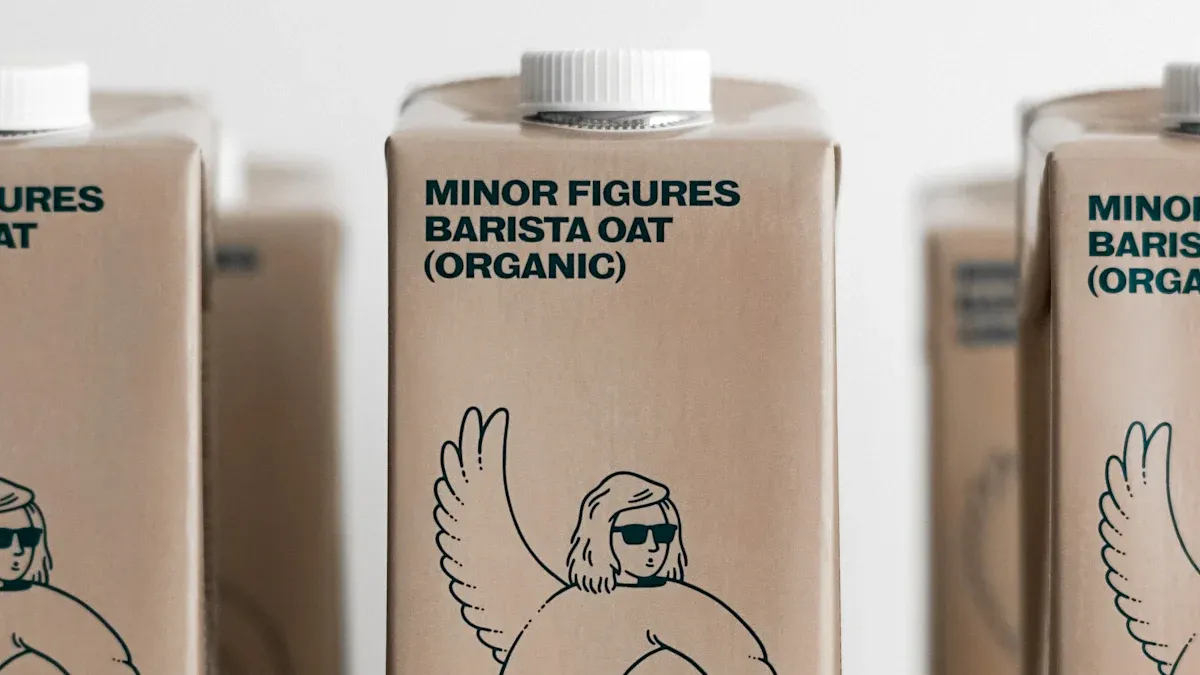
Plastic, Paper, Aluminum
Milk powder packaging uses different materials. Each one has good and bad points. Companies pick paper-based, plastic-based, metal-based, or composite materials. The table below shows how each material is different:
Packaging Material | Advantages | Disadvantages |
|---|---|---|
Paper-based | Light, easy to recycle, breaks down, good for printing | Tears easily, not good with water, smells, not for long storage |
Plastic-based | Strong, light, keeps out water, many shapes and sizes | Does not break down, can pollute, not as pretty, hard to recycle |
Metal-based | Tough, keeps air and light out, keeps powder fresh, good for logos | Not easy to change, heavy, costs more to ship, not green, hard to recycle |
Composite | Strong and green, can block things out, can be changed | Harder and costs more to make, needs special recycling, not for every product |
Laminated materials like polyester, polyethylene, and aluminum foil are used a lot. Polyester is strong and easy to print on. Polyethylene seals well and bends without breaking. Aluminum foil keeps out light, air, and water. This helps milk powder stay fresh.
Stand-Up Pouches
Stand-up pouches are now common for milk powder. These pouches stand up on shelves, so people see them easily. They often have closures you can open and close again. Shoppers like these pouches because they are simple to use and carry. Stand-up pouches keep milk powder safe from water and air. They also give brands more room for logos and info.
Stand-up pouches cost more to make than plain bags.
They have closures you can use again, look good on shelves, and protect better.
Many people like these pouches because they are easy to use and take with them.
The market for these pouches is growing fast, especially where people have more money.
There are now green choices for these pouches, which helps the planet.
Tip: Stand-up pouches help brands get more buyers and keep milk powder fresh.
Bulk Bags and Industrial Packaging
Big milk powder shipments need strong and safe packaging. Bulk bags and industrial packaging must keep out water, air, and light. Most companies use thick paper sacks with plastic liners, FIBCs, or plastic film bags. These bags must follow food safety rules and work with fast filling machines.
Multi-layer bags use a plastic liner inside, a strong plastic layer, and a kraft paper outside.
Packaging must be tough for stacking and moving.
Machines help fill and seal bulk bags fast.
Being green is important, so many companies use bags that can be recycled or break down.
Bulk packaging keeps milk powder safe when shipping and storing. It also stops damage and keeps the powder good.
Selecting the Right Solution
Powder Characteristics
To pick the best powder packaging machine, you need to know about the powder. Powders are not all the same. Some powders move easily, but others stick together. These differences change which machine works well.
Powders with big pieces or that do not flow well need strong feeding systems.
Sticky or wet powders need machines that stop clumping and blocking.
Machines with servo-driven auger fillers can handle different sizes and weights.
Knowing these powder traits helps companies keep their product safe and clean. The best milk powder packing machine fits the powder’s needs for easy use.
Production Scale
How much milk powder a company packs each day is important. This helps decide which packaging machine to use.
1. Find out how much milk powder you need to pack. 2. Learn about the powder’s traits. 3. Pick the type of packaging, like paper, plastic, or composite. 4. Match the machine to how much you need to pack: volumetric fillers for small jobs, auger fillers for big jobs, and rotary fillers for very big jobs. 5. Choose how much automation you want. 6. Make sure the machine works with your packaging material. 7. Look for machines you can change or adjust. 8. Think about your budget and how much you need to make. 9. Pick the right setup for your needs. 10. Check for features like sensors and dust control.
Automation Level | Suitable Production Scale | Advantages | Example Use Case |
|---|---|---|---|
Small-scale production | Cheap, flexible, easy to start | Good for new companies or small batches | |
Semi-Automatic | Medium-scale production | More steady and faster | Good for mid-sized companies |
Fully Automatic | Large-scale production | Fastest, needs less work, makes a lot | Best for big companies making thousands each hour |
Automation Needs
Not every company needs the same automation. Bigger companies often pick machines that are fast and accurate. These machines help stop moisture and clumping, so the powder stays safe. Features like auger fillers, automatic weighing, and nitrogen flushing work for many package types. Modular machines are easy to clean and change. Automation lets companies fill packages without stopping, cuts down on waiting, and helps follow food safety rules. For small jobs, manual or semi-automatic machines might be better.
Tip: Automated powder packaging machines help companies work faster, make better products, and spend less on workers.
Compatibility and Integration
It is important that new powder packaging machines fit with old equipment. Companies should choose modular machines for quick changes. Easy controls help workers use the machines. Built-in quality checks find problems early. Sensors and AI help watch the machines and fix things before they break. These features help the packaging line run well and keep production steady.
Installation and Maintenance
Setup Best Practices
Setting up milk powder packaging machines the right way is important. It helps companies work safely and quickly. Here are some steps to follow:
Use machines like can unscramblers, filling machines, sealing machines, and metal detectors. These machines do more work and need less help from people.
Pick weighing and filling machines that are very accurate. They should be right within about one gram. This makes sure each package has the same amount.
Use fast sealing machines that can seal 30 to 45 cans every minute. This makes the work go much faster.
Choose machines made with 316L stainless steel and shiny, smooth parts. These parts touch the milk powder and help keep things clean.
Add a Clean-in-Place system. This system cleans the machine in many steps and stops chemicals from staying behind.
Keep the air clean with HEPA filters and use positive pressure. This helps keep germs and dust away from the milk powder.
Follow four main steps: wash and clean the cans, fill them, seal and label them, and check them at the end.
Teach workers how to clean and keep things safe. This helps everyone follow the rules.
Use machines that can be changed or added to later. This helps if the company needs to make more milk powder in the future.
Tip: Setting up machines the right way helps everything run well and lets the company grow.
Operation Guidelines
Workers need to follow rules to keep milk powder safe and good. They should store milk powder where it is not too hot or wet. They must check packages often to make sure nothing is wrong. Companies should use the First-In-First-Out method. This means using the oldest milk powder first. Cleaning storage rooms and machines should happen a lot. Workers should watch how much milk powder is left and order more before it runs out.
Workers must look at each batch of milk powder. They check the color and texture to make sure it looks right. They also test for germs and chemicals to keep it safe. Every package needs a label with the brand, nutrition facts, and when it goes bad. Workers should check that seals are tight and the packaging is strong. They also need to check the weight and amount in each package. Workers should learn about the rules and how to check for quality. They must also check how milk powder is moved so it does not spoil.
Note: Using new machines and technology helps companies pack milk powder better, waste less, and keep it safe.
Maintenance Tips
Taking care of machines helps them last longer and work well. Companies should:
Clean, oil, and check machines the way the maker says.
Make a plan to check and fix machines before they break.
Keep all parts that touch milk powder very clean.
Oil seals, bearings, and moving parts when needed.
Teach workers how to use machines the right way.
Check wires and electric parts often to find problems early.
Keep machines safe from dust, water, and heat.
Change old or broken parts fast so machines do not stop.
Fix strange sounds or problems right away.
Write down all the work done on the machines.
Workers should also change feeding device settings when using new materials. This keeps packaging correct. Keeping dust out of control boxes protects electric parts. Checking and setting sensors and scales often keeps them working right. Looking for leaks in air parts helps machines work well.
Callout: Taking care of machines helps companies avoid problems and keeps milk powder packaging good.
Challenges and Troubleshooting
Common Issues
Milk powder packaging has many problems during daily work. Machines can stop working or slow down if not cared for. Workers often see powder leaking, blocked nozzles, and wrong amounts filled. Sealing machines may get dirt stuck in the sealing head or rollers. Labeling machines sometimes have label pieces stuck or sensors that do not work. Dryers can get blocked with lint or show signs of damage. These problems can slow down work and hurt product quality.
Here is a table that shows common problems and how often they happen:
Equipment Type | Common Issues | Frequency / Occurrence |
|---|---|---|
Dryers | Blockages, lint accumulation, wear | Daily cleaning of exhaust and drum; regular inspection |
Filling Machines | Product leakage, nozzle blockage, belt wear, inaccurate filling | Daily cleaning; lubrication; visual inspection daily; worn parts replaced every 6-12 months; sensor calibration regularly |
Sealing Machines | Debris blockages, wear of sealing head, rollers, bearings, misalignments | Daily inspection; weekly lubrication and cleaning; monthly in-depth inspection |
Labeling Machines | Label debris, sensor and roller wear, loose screws | Daily cleaning; weekly lubrication and wear inspection |
Tip: Cleaning and checking machines often stops most packaging problems.
Solutions and Tips
Companies use different ways to fix packaging problems. They stop powder leaks by making seals better and using improved machine designs. Checking and fixing machines every day helps stop breakdowns and bad packaging. Explosion-proof motors and vacuum packing machines keep workers safe from dust explosions.
Use regular maintenance plans to find worn parts and keep seals tight.
Automated sealing systems watch for changes in temperature or pressure.
Ultrasonic sealing and smart checks help find and fix sealing problems fast.
Automated handling after sealing stops packages from getting damaged when moved.
Gentle mixers, like double shaft paddle mixers, protect soft milk powder ingredients. Screw or vibrating conveyors move powder short distances. Pneumatic conveyors are good for longer distances. Dense phase conveying after spray dryers or mixers keeps powder quality high. Companies think about powder density and friction when picking equipment to stop powder from separating.
Note: Smart packaging and careful equipment choices help companies keep milk powder safe and high quality.
Trends and Innovations
Smart Packaging
Smart packaging is changing how companies keep milk powder safe. New technology helps milk powder stay fresh for longer. Companies use active and antimicrobial packaging to stop germs. These do not need extra chemicals. For example, Purac Biochem’s polymer sheets slow bacteria growth. This makes milk powder last longer. Some packaging lets air move in and out. This stops moisture from building up. It keeps the powder dry and tasting good.
Many brands put QR codes or NFC tags on packages. People can scan these with their phones to get more info. Some packages have digital barcodes. These show where the milk powder comes from and how it was made. Digital printing lets companies change package designs fast. This helps brands stand out and connect with buyers. Smart packaging also helps track products and stop fake ones.
Smart packaging helps people trust what they buy. It also helps companies keep milk powder safe.
Sustainability
Sustainability is very important for milk powder packaging in 2025. Companies want to use less plastic and more recyclable materials. Many pick plastics like HDPE and PP. These are easier to recycle and make less pollution. Some companies use lighter packaging to save energy and lower shipping costs. They also use renewable energy to make packaging.
Fonterra and other big companies are testing new packaging. This packaging can be recycled and keeps milk powder fresh. They work with others to make recycling better in many places. These changes help the planet and follow new rules. Companies also use digital marks to help people recycle right.
Companies that use sustainable packaging help the environment. They also meet what customers want.
Regulatory Updates
New rules in 2025 are changing milk powder packaging. In China, fake packaging for infant milk powder is now banned. Labels must show if the milk is from cows or goats. Companies must check milk powder for germs and keep it safe during mixing.
The FDA in the United States has new rules for milk powder. Companies must have strong cleaning plans and test for germs like Salmonella. Labels must warn people if there is a problem. These rules help keep milk powder safe for everyone.
New rules make packaging safer. They help people trust the milk powder they buy.
Advanced milk powder packaging keeps products safe from germs and going bad. Companies use smart machines and good materials to keep milk powder fresh. They pick ways that help with cleanliness, speed, and caring for the planet. Manufacturers need equipment that follows food safety rules and fits what they make. Learning about new machines and rules helps companies stay ahead and trusted by buyers.
Flexible, carton, and tin packaging help milk powder last longer and grow in the market
Smart things like QR codes and machines that clean themselves make milk powder safer and easier to track
Using earth-friendly materials and fast machines helps brands give buyers and rule-makers what they want
Companies that use new packaging can give safe, top-quality milk powder and do well around the world.
FAQ
What is the best packaging material for milk powder in 2025?
Plastic and composite materials keep milk powder safe from air and water. Many companies now pick materials that can be recycled or break down. These choices help the powder stay fresh and safe for a long time.
How do companies keep milk powder packaging hygienic?
Companies use machines made of stainless steel. They clean these machines often. Many factories use HEPA filters and strong air flow. These steps help stop germs and dust from getting near the milk powder.
Why is nitrogen flushing important in milk powder packaging?
Nitrogen flushing takes out oxygen from the package. This stops the powder from going bad and keeps it fresh. It also helps protect the nutrients in the powder.
How can a company choose the right packaging machine?
A company should think about the type of powder, how much they make, and the package style. They also need to see if the new machine works with what they already have. Many companies ask a trusted machine maker for help.
What are the main trends in milk powder packaging for 2025?
Smart packaging, being green, and using more machines are big trends. Companies use QR codes to track products. They also pick earth-friendly materials and new machines to make things safer and faster.


